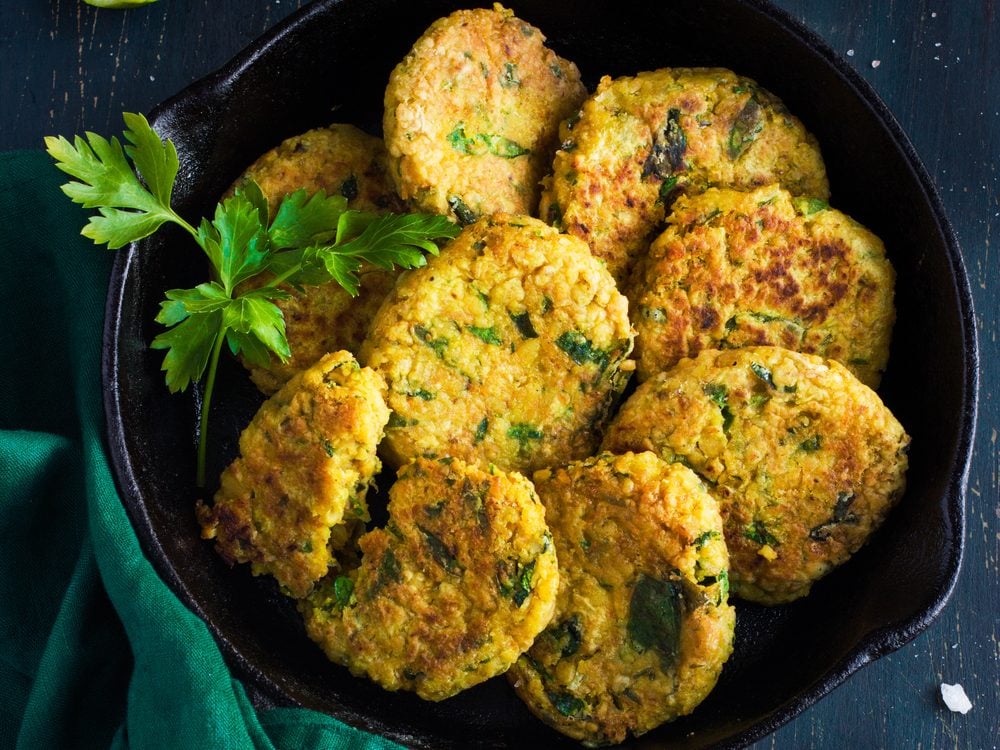
Veggie patties
A diet staple for those trying to cut back on meat, veggie patties can be healthy. But many of the processed, frozen versions have more fillers—used to create that burger-like texture—than actual vegetables, says Dawn Jackson Blatner, RDN, author of The Superfood Swap. To ensure your burger is packed with real good-for-you greens, check to make sure vegetables are listed at the beginning of the ingredient list. “Many brands have a long list of processed ingredients, additives, and preservatives and are low in protein,” says Blatner.
Here are more frozen foods you should avoid.
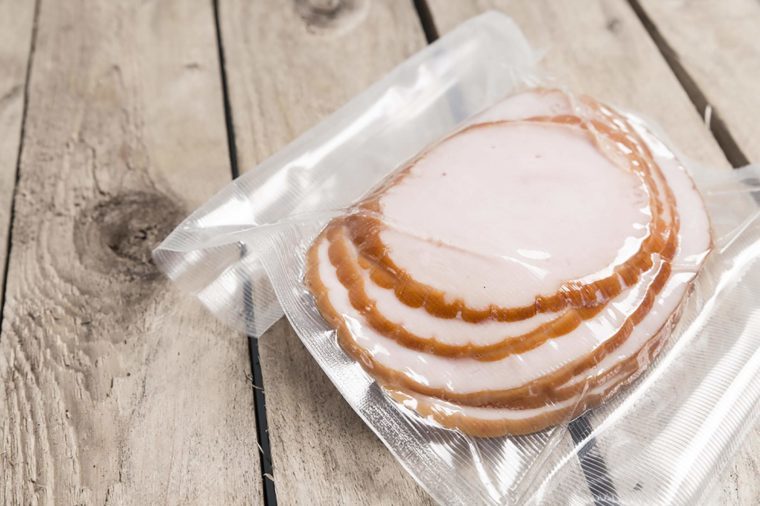
Packaged turkey
Yes, turkey is good, lean protein, and on a sandwich with whole-grain bread, lettuce, tomato, and other veggies, it isn’t a bad lunch choice. One culprit here is sodium; a two-ounce serving of some brands has as much as 450 grams of sodium, nearly one-third the daily limit recommended by the American Heart Association. What’s more, packaged turkey is a processed meat, which is classified as a carcinogen. The healthier move: Buy low-sodium slices (look for less than 350 mg sodium per two-ounce serving) or roast and slice your own meat.
Learn to spot the signs you’re eating too much salt.
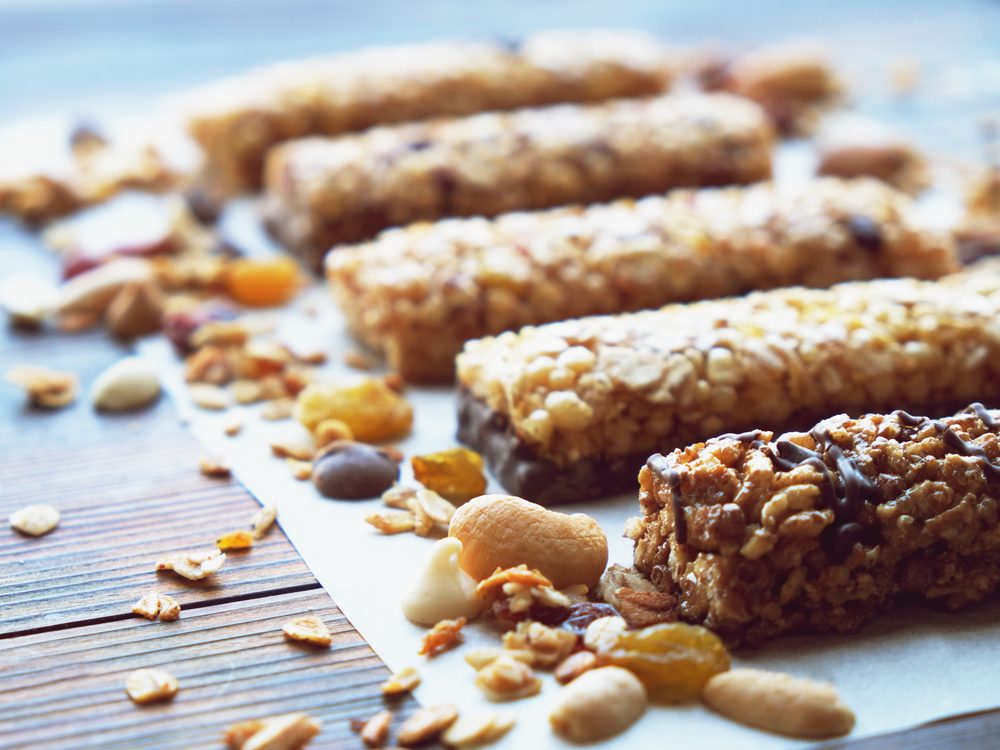
Energy bars
Praise the marketing geniuses who figured out a way to sell these unhealthy foods that contain more sugar and calories than certain candy bars as “healthy.” If you’re going to eat these surprisingly unhealthy foods, pick ones with “100 to 200 calories, four grams or more of protein, three grams or more of fibre, and less than 10 grams of sugar,” suggests Blatner. “The best bars have minimal ingredients, and those with more fibre and protein and less sugar will be more satisfying.”
These high-protein, low-carb foods will help you stay fuller for longer.
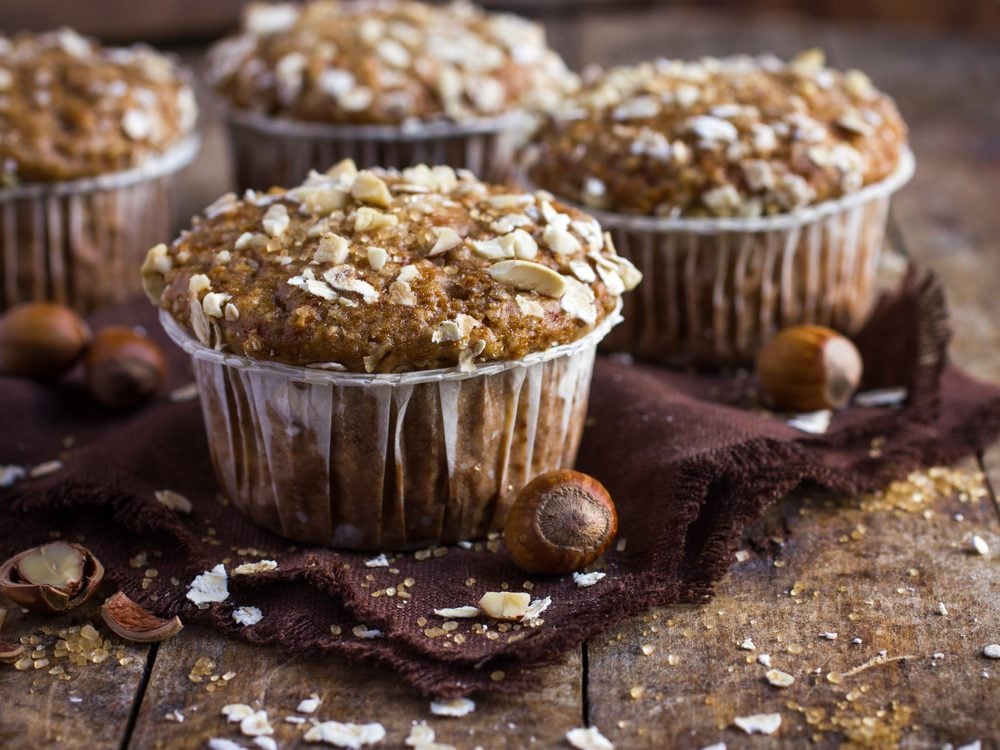
Bran muffins
Wholesome and humble, bran muffins seem like a breakfast food hero. But while bran itself is a source of fibre, it becomes less—much, much less—nutritious when baked into a muffin. “Bran muffins are typically loaded with white flour, white sugar, and butter,” says Blatner. If you’re really craving a muffin, make them yourself and look for recipes that use whole wheat flour and substitute applesauce for butter.
Try one of these healthy breakfast options.
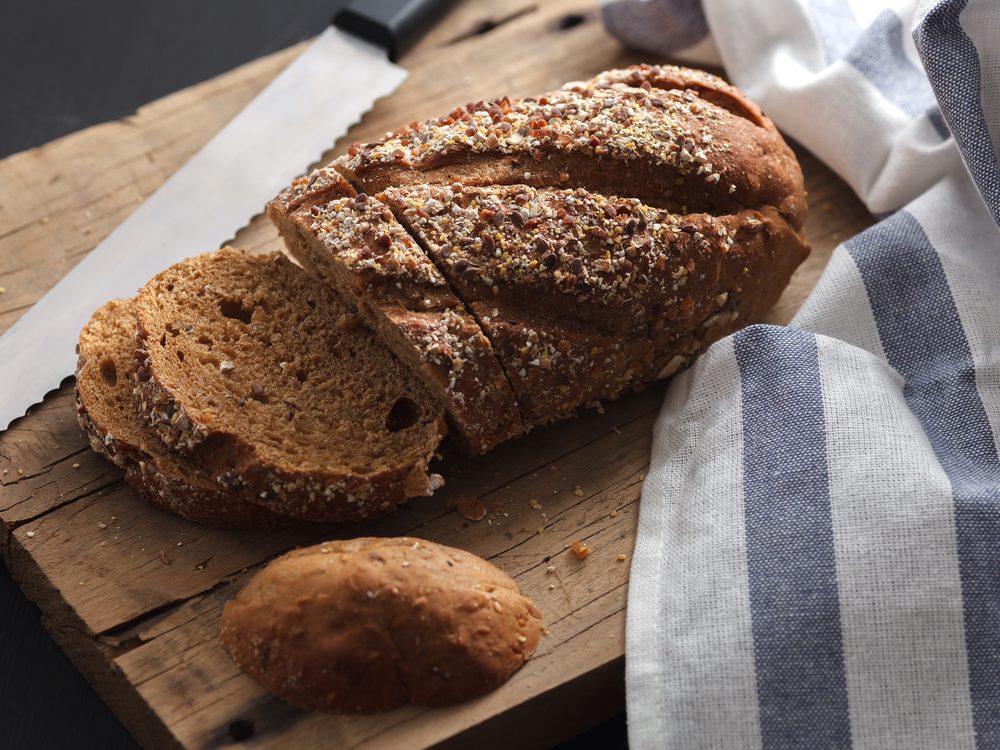
Multigrain bread
Words like “multigrain,” “wheat,” and “7 grain” don’t mean all that much. Many breads labelled this way actually contain refined grains, which lack the fibre of whole grains and can make your blood sugar spike faster after eating, leading to cravings. Be a smarter bread shopper! “Check the ingredient list to see that the bread is actually made with ‘whole’ grains,” says Blatner. If the first flour listed on the label is refined (look for “bleached” or “unbleached enriched wheat flour”), it’s not really a whole grain product.
Check out the surprising health benefits of pumpernickel bread!
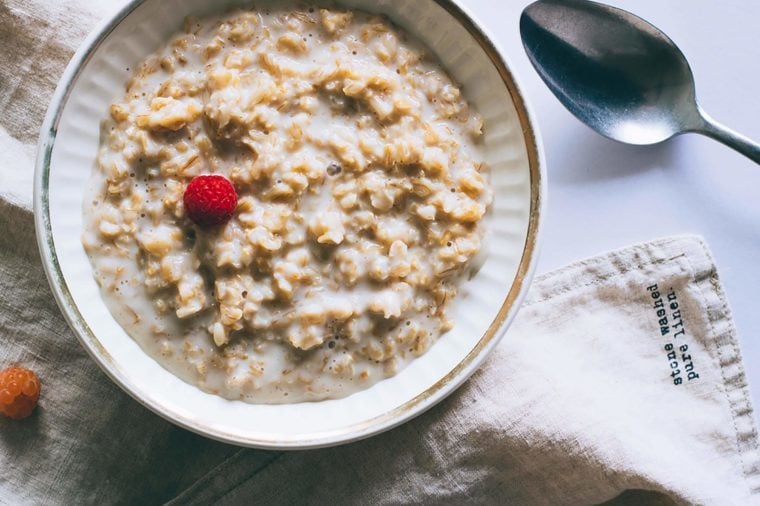
Flavoured instant oatmeal
It’s a whole grain, a healthy grab-and-go breakfast choice, and easily topped with other healthful sides like berries, flax, and nuts. So what could possibly be bad about oatmeal? Well, flavoured packets have more sugar and sodium than regular rolled or steel cut oats. “Plain instant oatmeal packets are great,” says Blatner. “Make a packet and then stir in natural peanut butter. You can also try adding cinnamon, vanilla extract, cocoa nibs, or unsweetened coconut flakes for flavour without sugar. Mashed berries or chopped banana make it naturally sweet.” Better yet, she says: Combine half cup rolled oats with one cup water and microwave for three minutes.
Watch out for these foods that make inflammation worse.
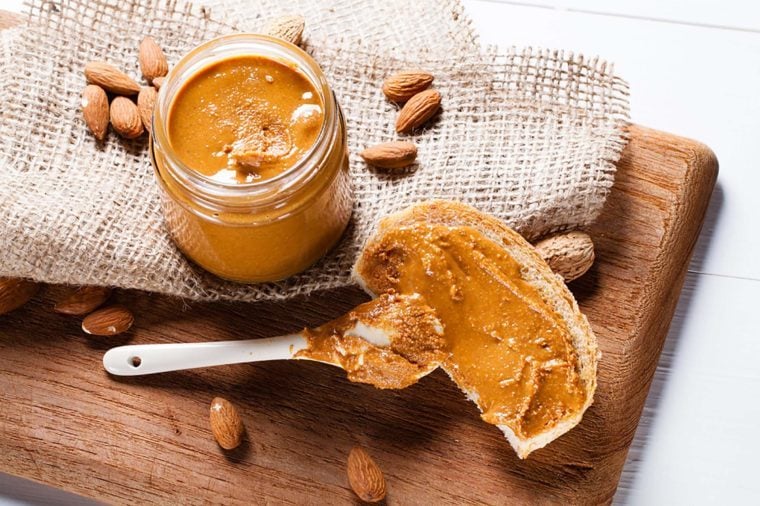
Reduced-fat peanut butter
Repeat after us: The fat from nuts is good for you! A study published in 2017 in the Journal of the American College of Cardiology found that an eating plan that includes nuts, tree nuts, peanuts, and walnuts was associated with a lower risk of cardiovascular disease. What’s more, when you compare labels of regular and reduced-fat peanut butter, you’ll see that the calories are roughly equal. The difference is that reduced-fat versions add more sugar to make up for the lack of fat. So choose the regular kind, and stick with 1 to 2 tablespoons per serving.
Add these heart-healthy foods to your everyday diet and your ticker will thank you—for decades to come.
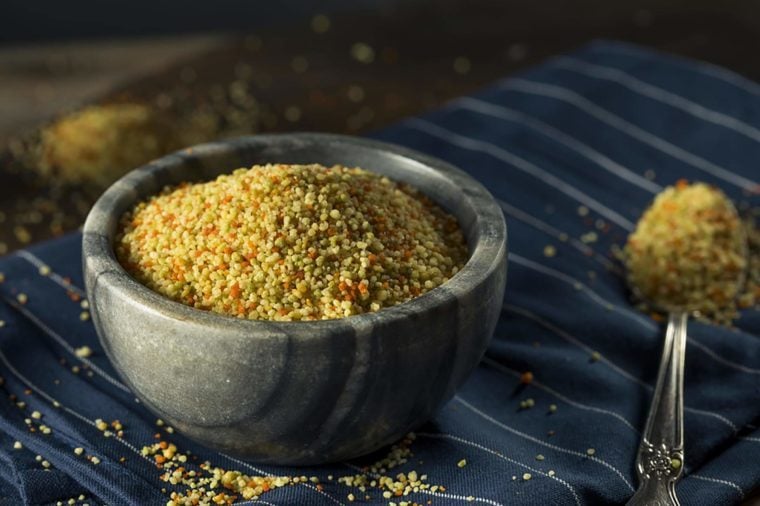
Couscous
This exotic-looking grain seems like a virtuous side dish, but the jig is up. Couscous is really just a tiny pasta—a refined grain similar to white pasta. Look for whole-wheat couscous, or else opt for a healthier whole grain like quinoa.
Find out how to keep a special diet balanced.
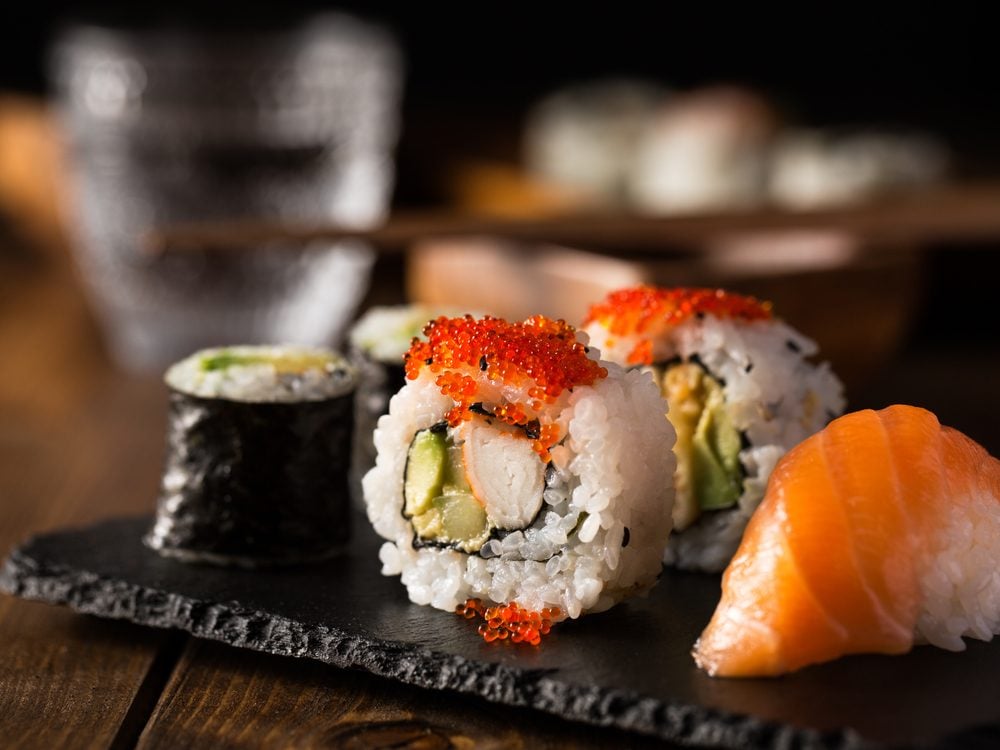
Sushi
Fresh fish, no heavy sauces—health food, right? We tend to eat a lot of sushi to feel full, and those rolls contain mostly rice and very few veggies. According to Los Angeles, CA-based nutritionist Rachel Beller, RDN, author of Eat to Lose, Eat to Win, one California roll is equivalent to eating a sandwich filled with imitation crab meat. A spicy tuna roll is like adding another tuna sandwich with full-fat mayo. A healthier option: Ask for rolls wrapped in cucumber or that are “easy on the rice” and be sure to fill up with a side salad or protein-packed edamame.
Learn the ways you’ve been cooking fish completely wrong.
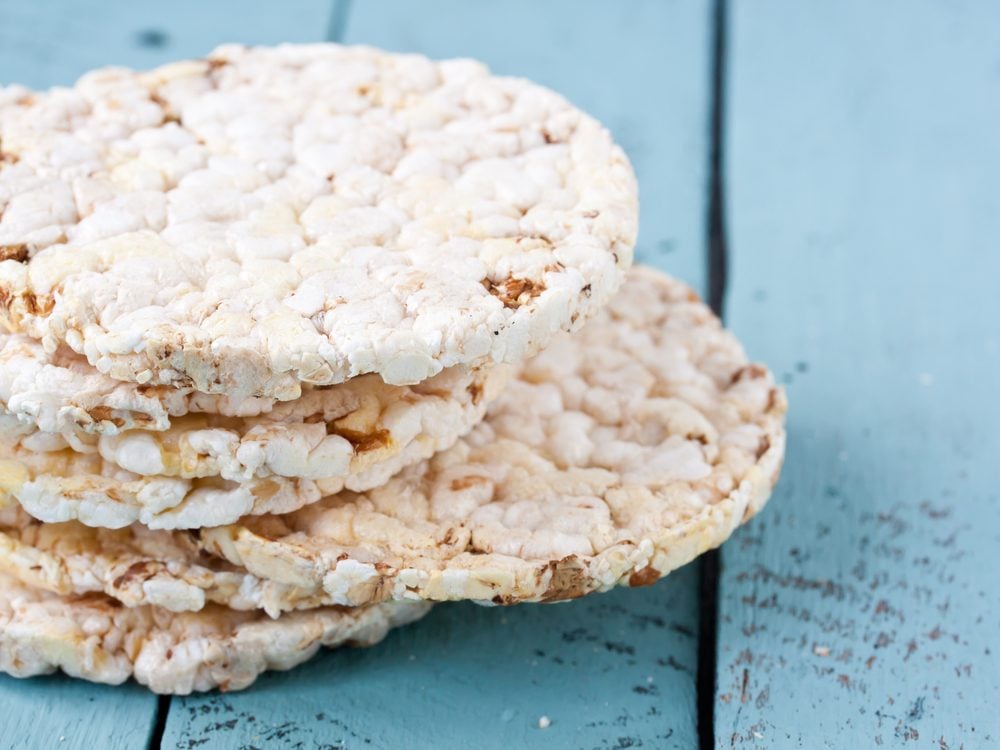
White rice crackers
So light, so airy—rice crackers and cakes are the ultimate diet snack food cliché. But, when made with white rice, these surprisingly unhealthy foods lack fibre and can be high in sodium. What’s more, white rice crackers are actually considered carb dense, meaning they have a high ratio of carb grams relative to their weight. (Carb-dense foods can alter the balance of your gut flora and trigger inflammation.) A plain rice cake weighs only nine grams but 80 per cent of it is carbohydrate. In comparison, a small potato—which many people think is a “bad” carb—weighs 170 grams but only 23 per cent is carbohydrate.
You’ll wish you knew these low-carb food swaps sooner!
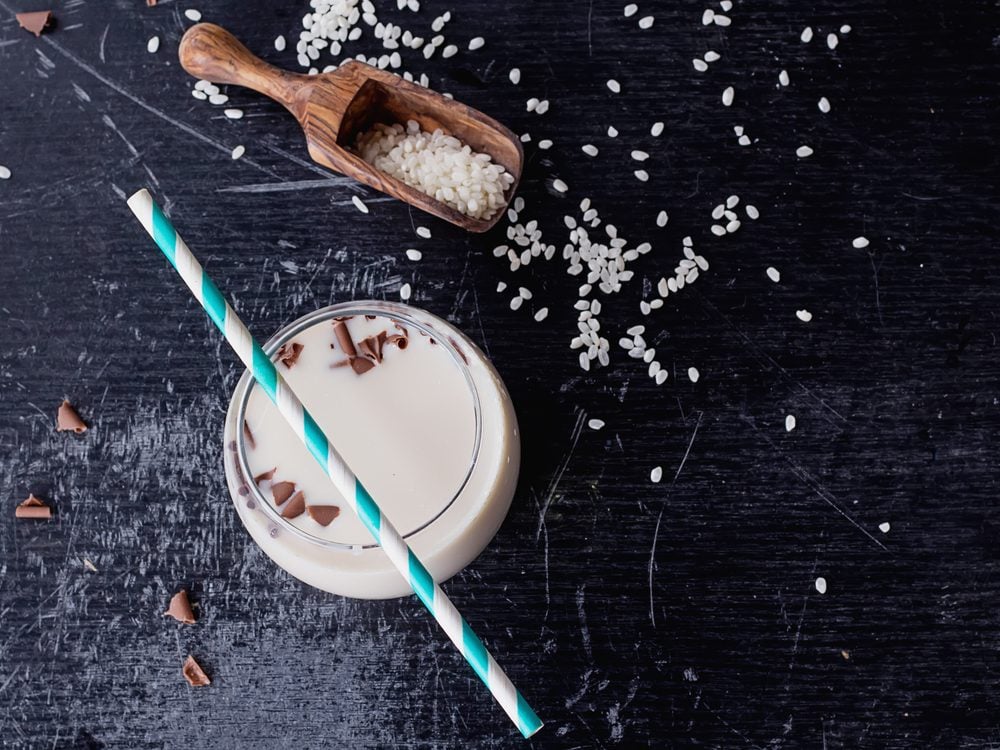
Rice milk
Unless its fortified, rice milk is nothing more than fluid from rice that’s naturally high in carbohydrates and low in protein and calcium. If you can eat dairy, you’re far better off with fat-free organic cow’s milk, which contains calcium, potassium, vitamin A, vitamin D, vitamin B12, riboflavin, and magnesium. Soy and almond milk are better dairy alternatives.
These are the foods nutritionists never eat late at night.
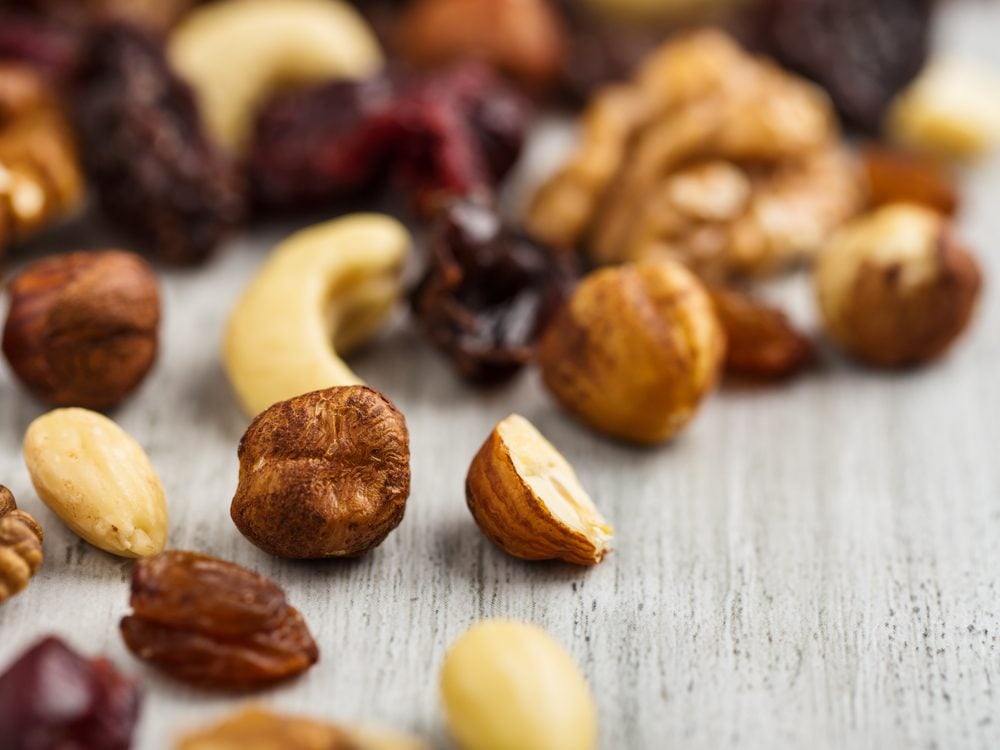
Trail mix
Most nutritionists will advise you to snack on a combination of carbs, protein, and fibre for sustained energy—and trail mix seems like a perfect example. But grocery store versions are often packed with not-so-nutritious add-ons: unhealthy foods like “yogurt”-covered raisins, deep-fried banana chips, sesame sticks, or salty nuts. Make a healthy mix yourself with mainly nuts and seeds and a little high-cacao dark chocolate and dried fruit.
Don’t miss these foods that lower blood pressure.
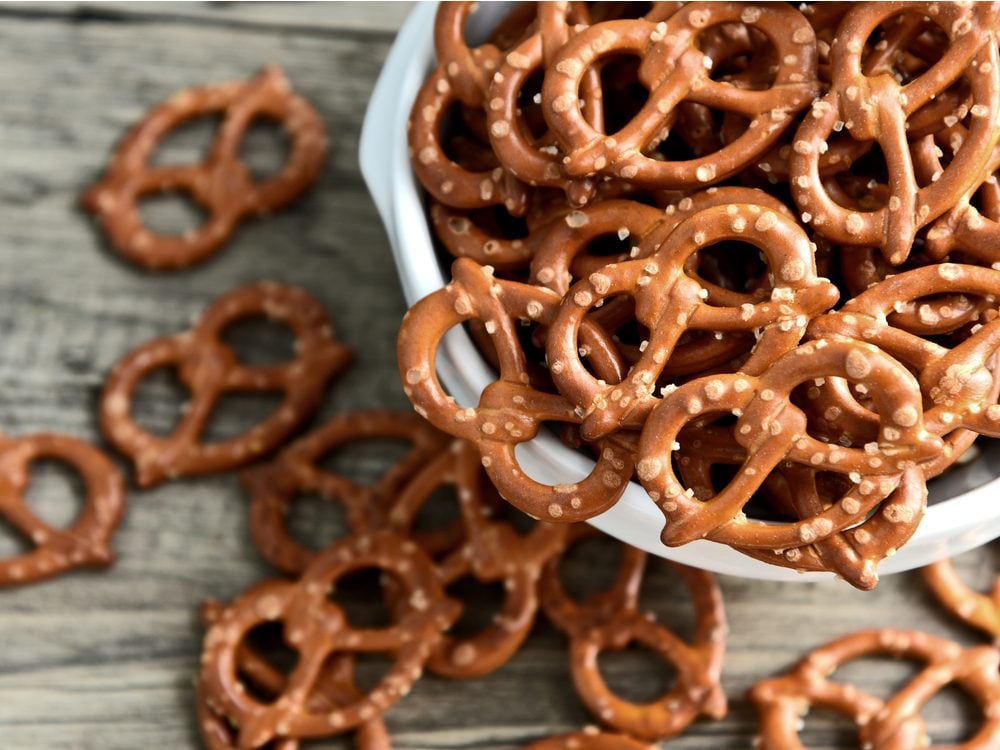
Pretzels
With fewer calories and fat grams than most chips, pretzels seem healthy. But nearly every brand of pretzels is made from the same basic ingredients: white flour—wheat flour that’s been stripped of its nutrients and fibre—yeast, salt, and maybe some vegetable oil or corn syrup. Look for those made with whole wheat flour or eating whole grain crackers, soy crisps, or popcorn instead.
Here’s our quick list of fruits for diabetics to avoid.
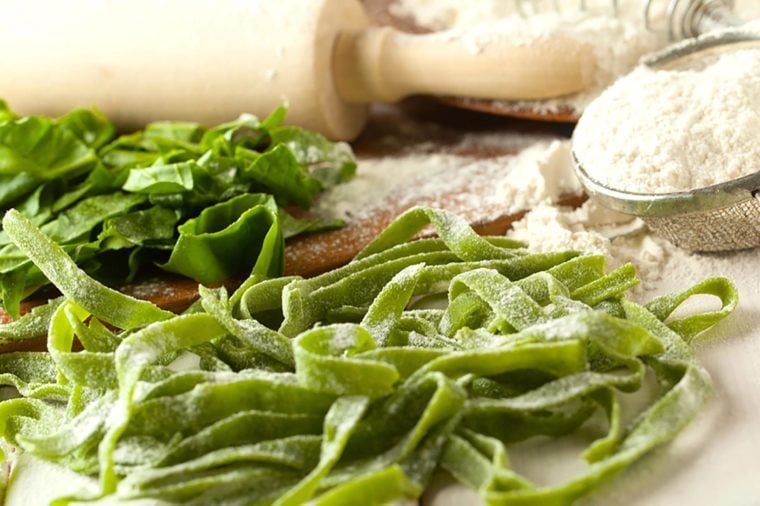
Spinach wraps and pasta
Don’t let the green hue fool you. The actual amount of spinach in green pasta and tortillas is trivial compared with what you would get if you added your own spinach leaves to your pasta dish or wrap. Eat whole grain wraps or pasta, then add actual spinach leaves to get the greens’ ample amounts of B vitamins, fibre, iron, and calcium.
Consider trying these healthy ingredient substitutions.
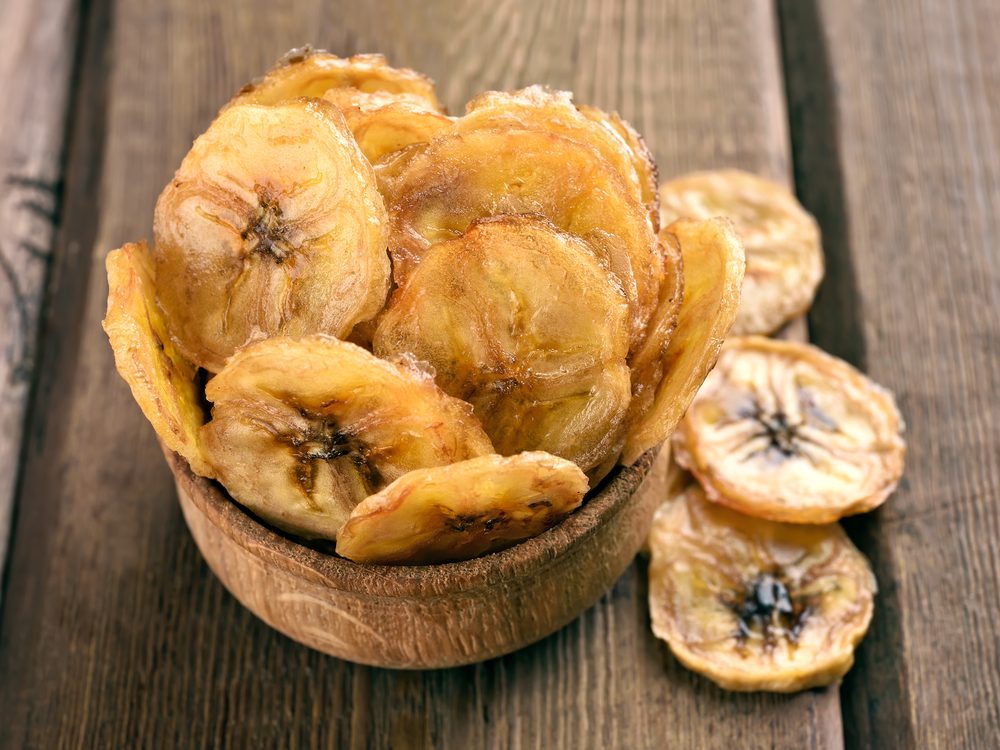
Banana chips
No matter how you slice it, these are fairly unhealthy foods, just plain inferior to their original fruit source. A plain banana provides fibre, potassium, vitamin C, and fewer calories and fat. One not-very-filling ounce of these chips, which are fried, has about 150 calories, while a medium banana only has 105.
The latest research on MSG might surprise you.
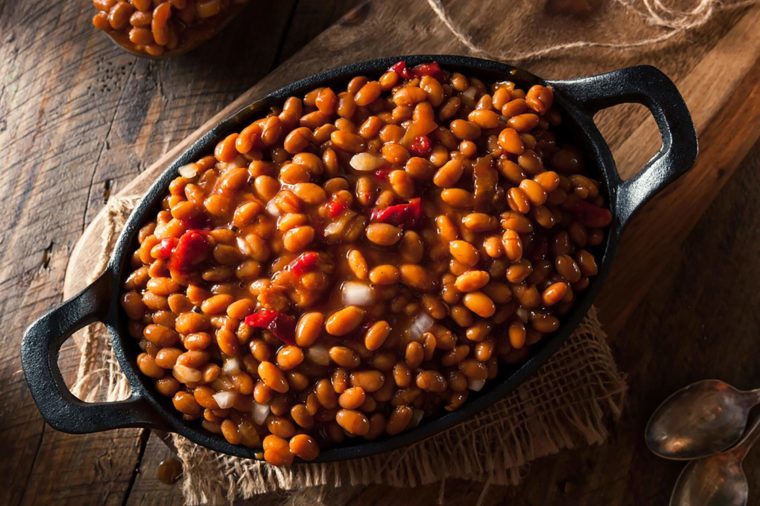
Baked beans
Beans are healthy. Baked beans, on the other hand, are a messy mix of pinto beans, sugar, syrup, and molasses with an unnecessarily high calorie count. Give regular pinto, kidney, and garbanzo beans more pizzazz by adding them to salads and pasta dishes.
Check out the health benefits of beans.

Bottled green tea
Are you drinking an antioxidant-packed health beverage or the equivalent of sugar water? A 2018 report from ConsumerLab.com found that certain brands of bottled tea sold in stores contain almost no ECGC, the potent antioxidant linked to cancer prevention and weight loss, or much lower amounts than what was claimed on the label.
Next, learn about the health benefits of green tea.